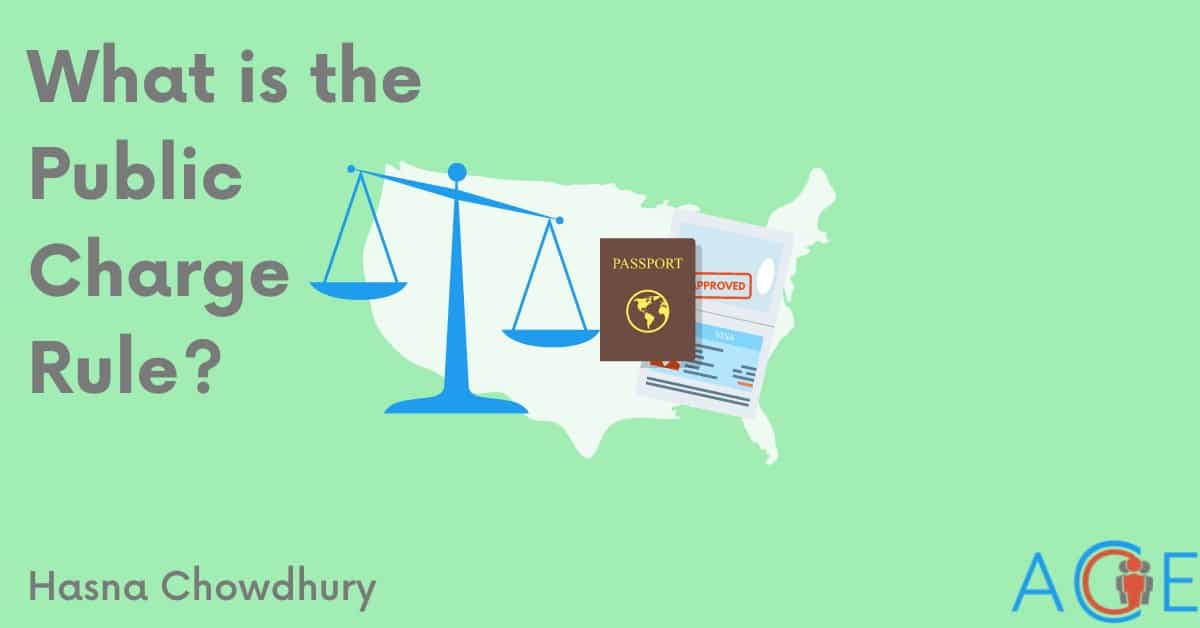Lawful permanent residents (LPRs) must wait 5 years before they can enroll in federally funded programs such as the Children’s Health Insurance Program (CHIP), Medicaid, Medicare, Supplemental Nutrition Assistance Program (SNAP), Temporary Assistance for Needy Families (TANF), and Supplemental Security Income (SSI). The five-year waiting period begins when individuals receive their qualifying immigration status and not when they first enter the US. This five-year waiting period, also known as the Five Year Bar, was part of the Personal Responsibility and Work Opportunity Reconciliation Act of 1996 (PRWORA). Qualified immigrants arriving in the US on or after enactment of PRWORA on August 22, 1996 may be ineligible for federal means-tested benefits for five years. Federal agencies clarified that the “federal means-tested public benefits” are Medicaid (except for emergency services), CHIP, TANF, SNAP, and SSI.
Who is Impacted by the Five Year Bar?
PRWORA was created to limit welfare dependency by encouraging work and the maintenance of two-parent families. In 2019, 23 out of every 100 families with children living in poverty receive cash assistance through TANF. The law placed limitations on federal funding for benefits such as health coverage of immigrant families by creating 2 categories of immigrants that entered the US on or after August 22, 1996 called “Qualified Immigrants” and “Not Qualified Immigrants.” “Qualified Immigrants” can access federally funded programs if they meet the eligibility requirements but only after the five-year bar. Qualified Immigrants are ineligible for SNAP and SSI until they become a US citizen, which requires five years of residency. States have the control to determine their eligibility for TANF, Social Services Block Grant (SSBG), and Medicaid. Qualified Immigrants include:
- Lawful permanent residents, or LPRs (people with green cards)
- Refugees or people granted asylum
- People granted parole by the U.S. Department of Homeland Security (DHS) for a period of at least one year
- Cuban and Haitian entrants
- Certain abused immigrants, including children and parents
- Certain survivors of trafficking
- Certain individuals residing in the U.S. pursuant to a Compact of Free Association (COFA) (for Medicaid purposes only)
“Not Qualified Immigrants”—including undocumented immigrants and other noncitizens—are unable to access most federally funded programs regardless of their time of residency. Below are the individuals who are exempt from the Five Year Bar:
- Refugees and asylees
- Veterans including their spouses and unmarried dependent children
- LPRs who have worked at least 40 qualifying quarters according to the Social Security Administration (SSA)
Brief Background on Medicaid and CHIP
Medicaid is a federal and state funded insurance program that is offered to low-income individuals. Undocumented immigrants are not eligible to enroll in Medicaid or CHIP however PRWORA allows undocumented immigrants to receive emergency Medicaid. Medicaid also establishes minimum requirements for eligibility and benefits. However, states are allowed to extend coverage beyond minimum levels so Medicaid coverage varies from state to state.
The Children’s Health Insurance Program (CHIP) was established in 1997 and offers low-cost health coverage for children in families whose household income is higher than the standard to qualify for Medicaid. CHIP covers children under the age of 19 and a very limited number of parents above the Medicaid eligibility requirements. The 2009 Children’s Health Insurance Program Reauthorization ACT (CHIPRA) was signed by President Obama which had a provision called the Immigrant Children’s Health Improvement Act (ICHIA). This provision gives states the option to provide Medicaid and CHIP to LPR children and pregnant women without a five-year waiting period. 18 states have eliminated the Five Year Bar for LPR pregnant women and children since January 2022. Access to coverage and health care services among immigrant children has improved substantially in states that have taken the CHIPRA option, and it was not associated with reductions in private coverage. At the end of 2012, 62% of immigrant children had health coverage through Medicaid or CHIP in states that took CHIPRA, compared to 21% of immigrant children covered in states that did not take up the option.
Justifications for the Five Year Bar
Congress emphasized the principle of self-sufficiency as a basic principle of US immigration law and policy when creating PRWORA. The law was described as a “reassertion of America’s work ethic” by the U.S. Chamber of Commerce. The policy emphasized that immigrants who are entering the US should only rely on their own capabilities and the resources of their families, sponsors, and private organizations. The policy also encouraged immigrants living in the U.S. to “not depend on public resources to meet their needs” and that the “availability of public benefits [does] not constitute an incentive for immigration to the United States.” PRWORA restrictions on immigrant access to public benefits originated from concerns that welfare programs were enticing American citizens to move to states with more generous welfare benefits. Proponents supporting PRWORA believe that welfare programs offered by the US have become a “magnet” for immigrants. Changes in the accessibility of means-tested programs post-PRWORA affected low-skilled unmarried immigrant women the most, who were more likely to settle in states that restored benefits and had the highest probability of welfare use. PRWORA laid the foundation for further exclusions as several public benefit programs and systems were created since 1996 including CHIP by imposing the Five Year Bar and the Affordable Care Act (ACA) which excludes healthcare coverage towards undocumented immigrants.
Arguments Against the Five Year Bar
Many argue that the Five Year Bar is a barrier to immigrant healthcare access. For example, the Five Year Bar impacts older immigrants who do not have access to health insurance through employment and may not be able to qualify for specific benefits such as SSI and Medicare. PRWORA, which expired in 2002, has caused a “chilling effect” in immigrant communities due to its eligibility restrictions. Many qualified immigrants, who are eligible to access public benefits since they do not have to wait 5 years, do not access the healthcare they need. For example, foreign born immigrants who are 65 and older reported more chronic diseases, reduced Activities of Daily Living, and poor mental health compared to US born older adults. Some states are eliminating the Five Year Bar. For example, Illinois is using state funds to cover Medicaid for low-income undocumented seniors. In addition, some states are considering lifting the Five Year Bar in hopes of better health outcomes, especially among pregnant women and children who are LPRs. Advocates of lifting the Five Year Bar in Georgia believe that doing so would provide health insurance to more children and increase access to prenatal care.
Immigrants subject to the Five Year Bar have few options for health insurance. In 2020, among the nonelderly population ages 0-64, 26% of LPRs and 42% undocumented immigrants were uninsured compared to fewer than 1 in 10 citizens. Immigrant women in the US also continue to face challenges when obtaining affordable health coverage and care including sexual and reproductive health services. Immigrant women are likely to obtain limited available services such as from publicly funded family planning centers where 7 of 10 immigrant women reported a safety-net site as their usual source of medical care. 41% of immigrant women who obtained contraceptive care in the years 2006-2010 did so at safety-net family planning centers, compared to 25% of their U.S.-born counterparts.
Another argument against the Five Year Bar is that it makes it difficult for immigrants to access healthcare due to the varying state-by-state policies. Differing state policies may result in varying population growth among states due to differences in health insurance coverage. States that offer more generous health insurance coverage may have an influx of immigrants they were not prepared for leading to a lack of resources. Many believe there should be national legislation on immigrant access to care rather than leaving the decision to states.
Should there be Reforms?
There are currently two proposed acts to address the Five Year Bar.
- The Health Equity and Access under the Law for Immigrant Families Act of 2021 (HEAL Act) allows immigrants to participate in health care programs. The Bill would remove the Five Year Bar and ensure all individuals, including LPRs and the Deferred Action for Childhood Arrival (DACA) recipients, are eligible for federally funded healthcare programs. The legislation also mandates that DACA recipients are able to obtain premium-tax and cost sharing reductions in order to purchase care through the ACA.
- The Lifting Immigrant Families Through Benefits Access Restoration Act of 2021 (LIFT the BAR Act), introduced by Representative Pramila Jayapal and Tony Cardenas, would restore access to public benefits such as SSI, TANF, SNAP, and Medicaid for LPRs, DACA recipients, individuals granted Special Immigrant Juvenile Status (SIJS), and other federally authorized non-citizens residing in the US. The Bill would also remove the Five Year Bar. Lastly, the Bill would consider all LPRs “qualified” immigrants for the purpose of federally funded benefit program eligibility.


